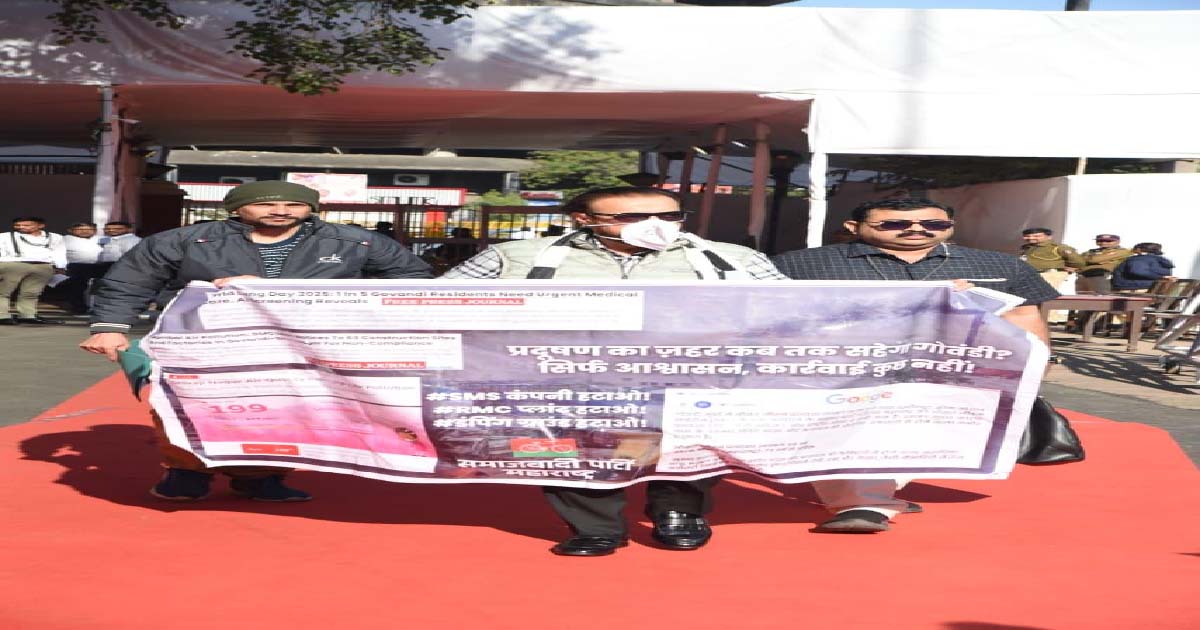General
Scientists develop mechanism to inactivate Covid by blocking entry to cells

Scientists have developed a design of a new class of synthetic peptides that can not only block the entry of SARS-CoV-2 virus entry into cells but also clump the virions (virus particles) together, reducing their ability to infect.
Scientists at the Indian Institute of Science (IISc), in collaboration with researchers from the CSIR-Institute of Microbial Technology, have made use of this approach to design peptides that can bind to and block the spike protein on the surface of SARS-CoV-2 virus, said the Ministry of Science and Technology on Wednesday.
This binding was further characterised extensively by cryo-electron microscopy (cryo-EM) and other biophysical methods. This novel approach provides an alternative mechanism to render viruses like SARS-CoV-2 inactive, promising a new class of peptides as antivirals.
The research was supported under the Covid-19 IRPHA call of SERB Science and Engineering Research Board (SERB), a statutory body of Department of Science and Technology (DST).
The designed peptides are helical, hairpin-shaped, each capable of pairing up with another of its kind, forming what is known as a dimer. Each dimeric ‘bundle’ presents two ‘faces’ to interact with two target molecules.
In the study published in Nature Chemical Biology, the researchers hypothesised that the two faces would bind to two separate target proteins locking all four in a complex and blocking the targets’ action. The team decided to test their hypothesis by using a peptide called SIH-5 to target the interaction between the Spike (S) protein of SARS-CoV-2 and ACE2 protein, the SARS-CoV-2 receptor in human cells.
The S protein is a trimer – a complex of three identical polypeptides. Each polypeptide contains a Receptor Binding Domain (RBD) that binds to the ACE2 receptor on the host cell surface. This interaction facilitates viral entry into the cell.
The SIH-5 peptide was designed to block the binding of the RBD to human ACE2. When a SIH-5 dimer encountered an S protein, one of its faces bound tightly to one of the three RBDs on the S protein trimer, and the other face bound to an RBD from a different S protein.
This ‘cross-linking’ allowed the SIH-5 to block both S proteins at the same time. Under cryo-EM, the S proteins targeted by SIH-5 appeared to be attached head-to-head, and the spike proteins were being forced to form dimers.
Subsequently, the researchers showed that SIH-5 inactivated the viruses efficiently by cross-linking the spike proteins from different virus particles.
The team consisting of B Khatri, I Pramanick, SK Malladi, RS Rajmani, P Ghosh, N Sengupta, R Varadarajan, S Dutta and J Chatterjee from Indian Institute of Science (IISc), R Rahisuddin, S Kumar, N Kumar, S Kumaran and RP Ringe from CSIR-Institute of Microbial Technology, tested the peptide for toxicity in mammalian cells in the lab and found it to be safe.
When hamsters were dosed with the peptide and subsequently exposed to a high dose of SARS-CoV-2, they showed decreased viral load as well as much less cell damage in the lungs compared to hamsters exposed only to the virus, demonstrating the promise of this class of peptides as antivirals.
The researchers believe that with minor modifications and peptide engineering, this lab-made miniprotein could inhibit other protein-protein interactions as well.
Maharashtra
Azmi’s unique protest… Wearing a mask, he reached Nagpur Assembly with a banner demanding effective action to end toxic air pollution in Mumbai, SMS company

Mumbai: Air pollution and toxic atmosphere are common in Mankhurd Shivaji Nagar. The people of Shivaji Nagar and Govindi are facing toxic fumes every day. Successive governments have neglected this area because it is a poor neighbourhood.
On the second day of the winter session of the Assembly today, the Samajwadi Party (SP) made a clear demand.
It has demanded the immediate closure of the SMS company, RMC plant, and dumping ground and made it clear to the government that it should stop playing with the lives of the common man.
The government should take effective steps to eliminate this toxic air pollution. Abu Asim Azmi said that due to the SMS company in Govandi, the average age of people has increased to 39 years and diseases are spreading due to burning waste and chemical materials in it, so it should be banned immediately. He further said that clean sanitation and other facilities should be available in Govandi and such a factory should be closed so that the people can live a healthy life. Abu Asim Azmi protested against the toxic air outside the Nagpur Assembly in a very unique way by holding a banner and wearing a mask.
Maharashtra
Increase in crime incidents in Mankhurd Shivaji Nagar, demand for action against drug dealers and drug users, Abu Asim demands in Nagpur Assembly

Mumbai: Due to the increase in crime incidents in Mumbai’s Mankhurd Shivaji Nagar, the law and order situation is dire. Due to the shortage of police manpower, it is difficult to control crimes. Three murders have been committed here in three months. The increasing incidents of crime. Maharashtra Samajwadi Party leader and MLA Abu Asim Azmi, while addressing the Nagpur winter session, expressed concern and said that he demanded an increase in the police manpower and the establishment of a new police station in Shivaji Nagar so that criminal elements can be curbed. Along with this, he has also demanded action against drug and drug addicts here. Abu Asim Azmi told the House on a notice seeking attention that there has been an increase in murders, attempted murders and robberies last month. A 24-year-old coconut vendor was murdered over a money transaction. The second murder was committed due to personal enmity and the third murder was committed due to drug dealing. The police are investigating this case in connection with drugs. Mankhurd Shivaji Nagar is a poor area. The law and order situation here is bad due to drug addicts and drug dealers. The population here has also increased immensely. Whenever a road expansion or other project is started somewhere, people are rehabilitated here. That is why there is a shortage of police here. Even after setting up a bat post, there is no police in it because there is a shortage of police manpower. In such a situation, Azmi has demanded that police be deployed here.
Maharashtra
Mumbai: Hajra, wife of builder Riaz in Kurla, accused of illegal abortion, Kherwadi police registers case against mother

Mumbai: An incident has come to light in Mumbai in which a case has been registered against a mother for illegally aborting a pregnancy. Kherwadi police have registered a case of abortion against the second wife of Kurla builder Riaz Shah. On December 7, Riaz Shah’s son filed a complaint in which it was stated that Hajra Shah had miscarried a 24-month-old child. The abortion was done using contraception in 2024 and on the complaint of this illegal act, the police have registered a case against Hajra and her brother Ashfaq under sections 88, 91, 238 of the BNS. This is the first case of its kind in which a case has been registered against the mother for wasting contraception. In 2024, when Riaz Shah asked his wife where the child was, she said that she had miscarried and that she had done the autopsy of the newborn in the Kurla Sunni graveyard and her brothers Ashfaq and Imran Lado knew about this. When Riaz checked in the graveyard, no record of the newborn was found, after which the police registered a case of misleading and aborting the child. Junaid Riaz Shah has filed a complaint against Liya. The police are investigating the matter further.
-

 Crime3 years ago
Crime3 years agoClass 10 student jumps to death in Jaipur
-

 Maharashtra1 year ago
Maharashtra1 year agoMumbai Local Train Update: Central Railway’s New Timetable Comes Into Effect; Check Full List Of Revised Timings & Stations
-

 Maharashtra1 year ago
Maharashtra1 year agoMumbai To Go Toll-Free Tonight! Maharashtra Govt Announces Complete Toll Waiver For Light Motor Vehicles At All 5 Entry Points Of City
-

 Maharashtra1 year ago
Maharashtra1 year agoFalse photo of Imtiaz Jaleel’s rally, exposing the fooling conspiracy
-

 National News1 year ago
National News1 year agoMinistry of Railways rolls out Special Drive 4.0 with focus on digitisation, cleanliness, inclusiveness and grievance redressal
-

 Maharashtra1 year ago
Maharashtra1 year agoMaharashtra Elections 2024: Mumbai Metro & BEST Services Extended Till Midnight On Voting Day
-

 National News1 year ago
National News1 year agoJ&K: 4 Jawans Killed, 28 Injured After Bus Carrying BSF Personnel For Poll Duty Falls Into Gorge In Budgam; Terrifying Visuals Surface
-

 Crime1 year ago
Crime1 year agoBaba Siddique Murder: Mumbai Police Unable To Get Lawrence Bishnoi Custody Due To Home Ministry Order, Says Report












